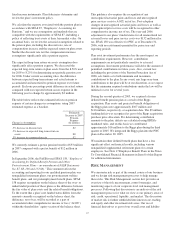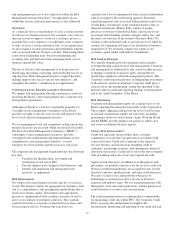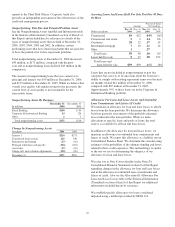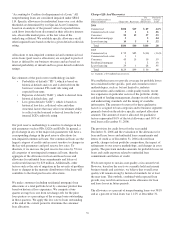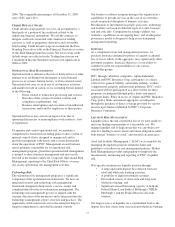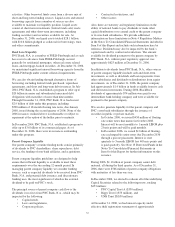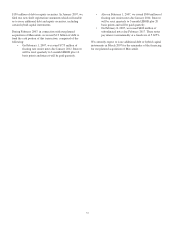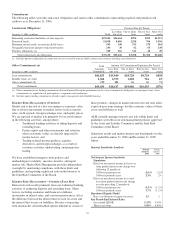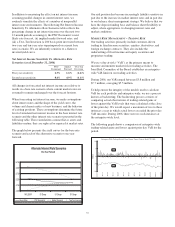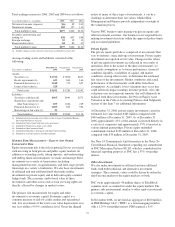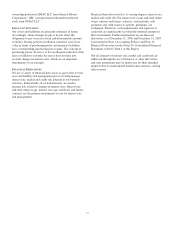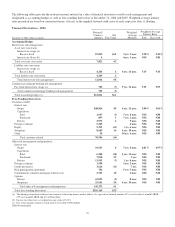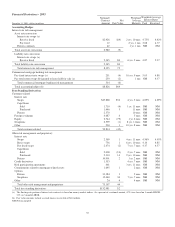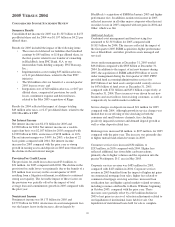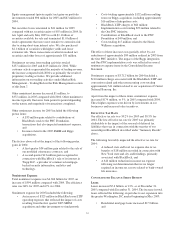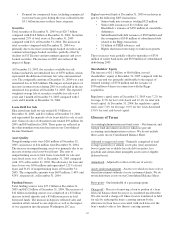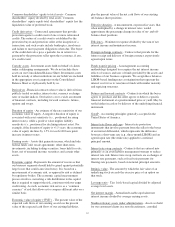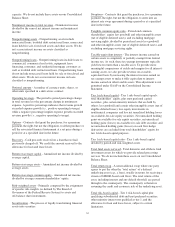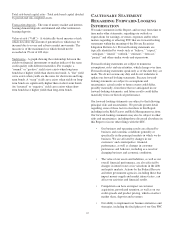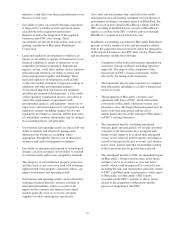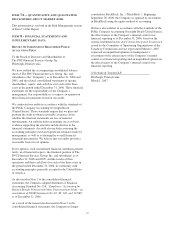PNC Bank 2006 Annual Report Download - page 67
Download and view the complete annual report
Please find page 67 of the 2006 PNC Bank annual report below. You can navigate through the pages in the report by either clicking on the pages listed below, or by using the keyword search tool below to find specific information within the annual report.ownership position in GMAC LLC from General Motors
Corporation (“GM”) and purchased redeemable preferred
stock from GMAC LLC.
I
MPACT OF
I
NFLATION
Our assets and liabilities are primarily monetary in nature.
Accordingly, future changes in prices do not affect the
obligations to pay or receive fixed and determinable amounts
of money. During periods of inflation, monetary assets lose
value in terms of purchasing power and monetary liabilities
have corresponding purchasing power gains. The concept of
purchasing power, however, is not an adequate indicator of the
effect of inflation on banks because it does not take into
account changes in interest rates, which are an important
determinant of our earnings.
F
INANCIAL
D
ERIVATIVES
We use a variety of financial derivatives as part of the overall
asset and liability risk management process to help manage
interest rate, market and credit risk inherent in our business
activities. Substantially all such instruments are used to
manage risk related to changes in interest rates. Interest rate
and total return swaps, interest rate caps and floors and futures
contracts are the primary instruments we use for interest rate
risk management.
Financial derivatives involve, to varying degrees, interest rate,
market and credit risk. For interest rate swaps and total return
swaps, options and futures contracts, only periodic cash
payments and, with respect to options, premiums, are
exchanged. Therefore, cash requirements and exposure to
credit risk are significantly less than the notional amount on
these instruments. Further information on our financial
derivatives as of December 31, 2006 and December 31, 2005,
is presented in Note 1 Accounting Policies and Note 16
Financial Derivatives in the Notes To Consolidated Financial
Statements in Part I, Item 1 of this Report.
Not all elements of interest rate, market and credit risk are
addressed through the use of financial or other derivatives,
and such instruments may be ineffective for their intended
purposes due to unanticipated market characteristics, among
other reasons.
57


